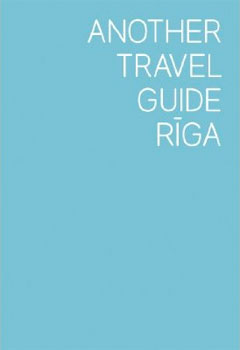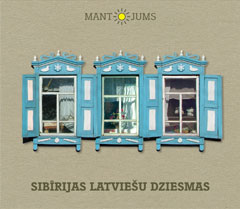
Are all travel guides the same? Is this really just “another travel guide”? Fortunately not! Around Christmas a breath of fresh air could be felt wafting through the streets of RĪga. Although Rīga was in the depths of a financial crisis, this has not been a hindrance to many creative souls in the capital. New shops, cafes, cafeterias have sprung up. The new travel guide, Another Travel Guide Rīga is proof of this itself. The guide is presented in an unusual format—proving that not all travel guides are of the same ilk.
The places described in the guide also show the ingenuity of the local community, not only among artists but all manner of entrepreneurial types, people who have brought their ideas to life in the past six months and opened their own small business. The phenomenon has most certainly been aided by the Latvian government lowering the costs associated with registering and setting up a business, but these incentives would have fallen on deaf ears if the ideas had not been latent, waiting for their time to arrive.
The brainchild of the creators of anothertravelguide.com, a Web site for intrepid travellers, the travel guide differs first in its look. The cover is one tone, made of rudimentary canvas, the outer spine multicolored as it is unbound. This half-finished look does not translate to the contents, however. The book is a very friendly compendium of unique places to visit or activities to try out while in Rīga. And not only of the recently opened kind. While most run-of-the-mill guide books will have the standard yawn-inducing photographs and descriptions of must-see sights, this guide provides a succinct list of the places in Rīga that are slightly quirky, sometimes off the beaten track, often unheard of by tourists, a well-kept secret of the locals.
Then there is the language issue. It is still surprising to see guide books written supposedly with the tourist in mind but with the foreign language still embarrassingly lacking. Often the only language that is of high quality in these guide books is Latvian—great for the locals, who often know the subject matter inside out anyway. This guide book is different. The language of choice is English and the language is top-notch, so you are spared the customary cringe when reading the text.
At first glance this guide is aimed at the twenty- and thirty-something crowd. Covered are cool trinket shops, trendy galleries, cheap eateries—mostly meant for those who are still in a perpetual state of finding themselves. Glance a bit further and you’ll see gems uncovered that are priceless: the local Vidzeme Market for its fresh produce; the Maternity Hospital for its fresh produce of a different sort; the Latvian Academy of Sciences for its architecture (love it or hate it, but it has a character of its own); the Sakta Flower Market, for flowers 24/7; the New Rīga Theatre with its avant garde approach, still going strong. Together with the legendary stalwarts of the city such as Café Osiris, the chess players at Vērmaņu Park, the ice fishermen (or bļitkotāji, as they are referred to by the locals) on the Daugava River and the Latgalīte Market, these people and places are all woven into the fabric that is the city of Riga.
Rīga is not only the Old Town and the few streets beyond. This vibrant city has many suburbs, some worth noting, some not so much. The more vintage of these, only getting a second lease on life in the past few years as they are rejuvenated, are the places to get to before they are fully refurbished. The thrill of viewing the run-down juxtaposed with the brand-spanking new is still to be had and is applicable to the Maskavas Suburb, Andrejsala, Ķīpsala, Pārdaugava, Bolderāja, the Spīķeri Quarter, Kundziņsala, to name only a few.
Another Travel Guide Rīga reveals the secrets of the locals, unveils the recent undertakings of folks who are brave and creative, and also looks at the traditional from a new perspective.
Details
Another Travel Guide Rīga
anothertravelguide.com
Rīga: anothertravelguide.com, 2009
ISBN 9984399192




